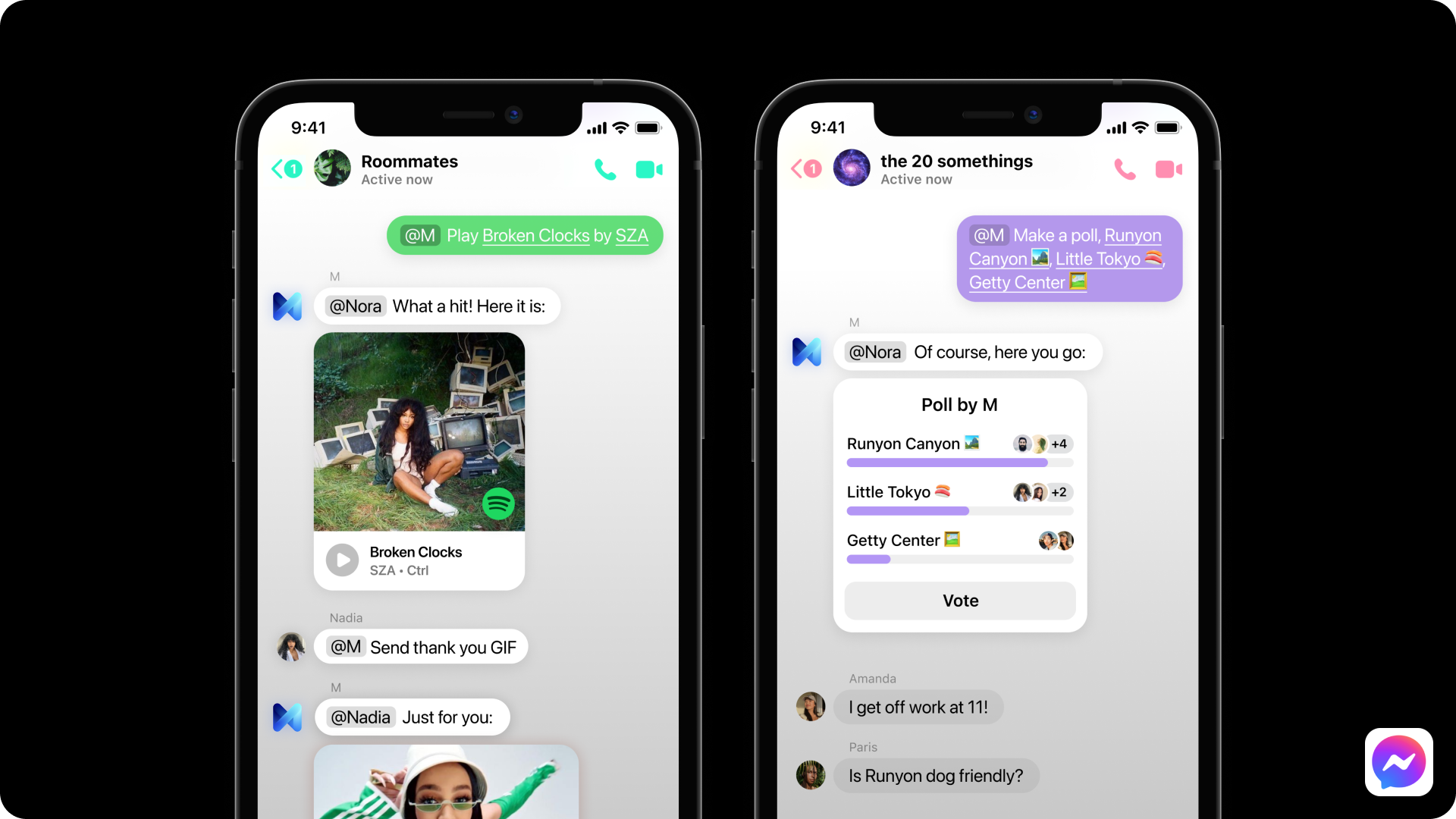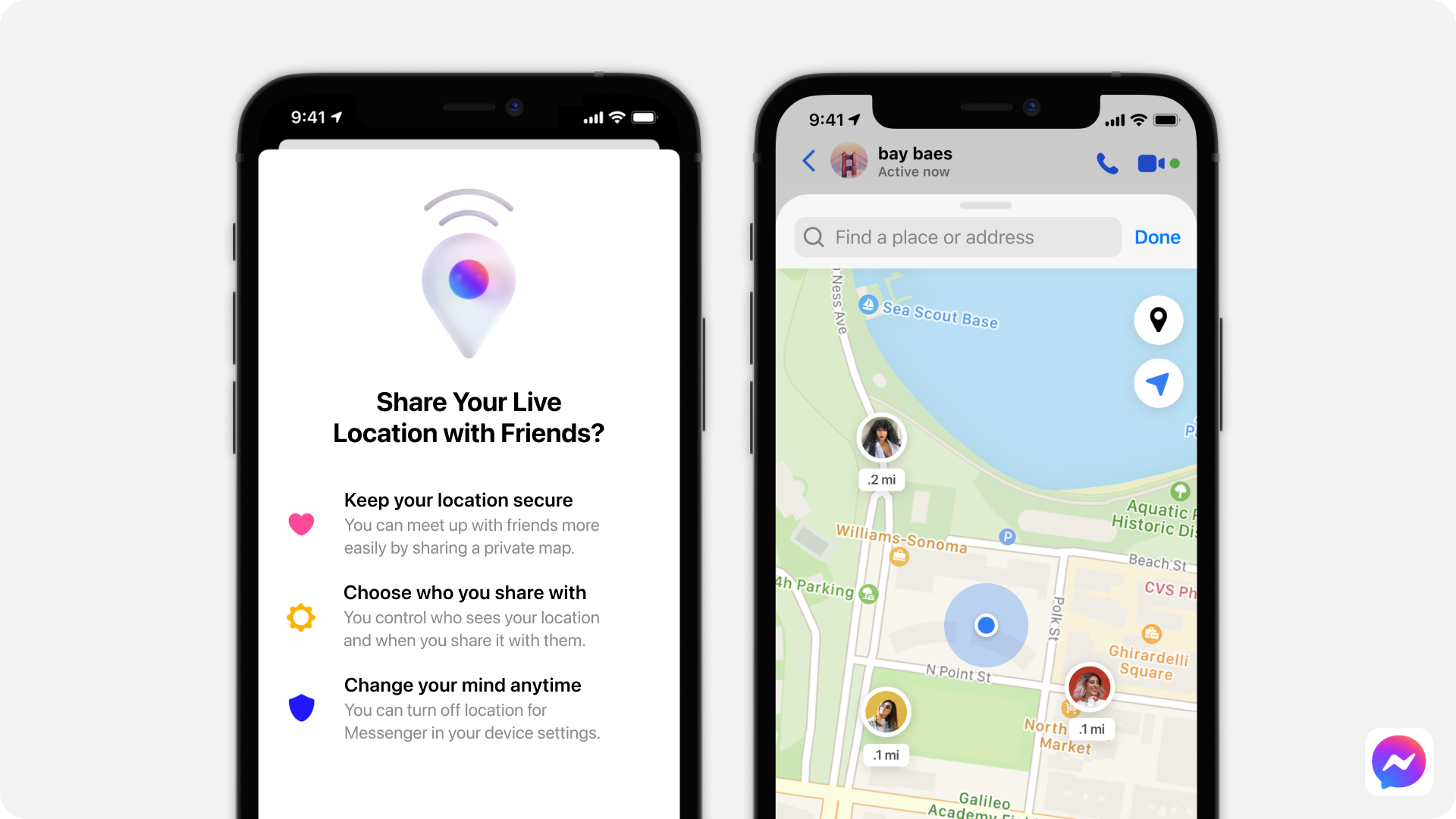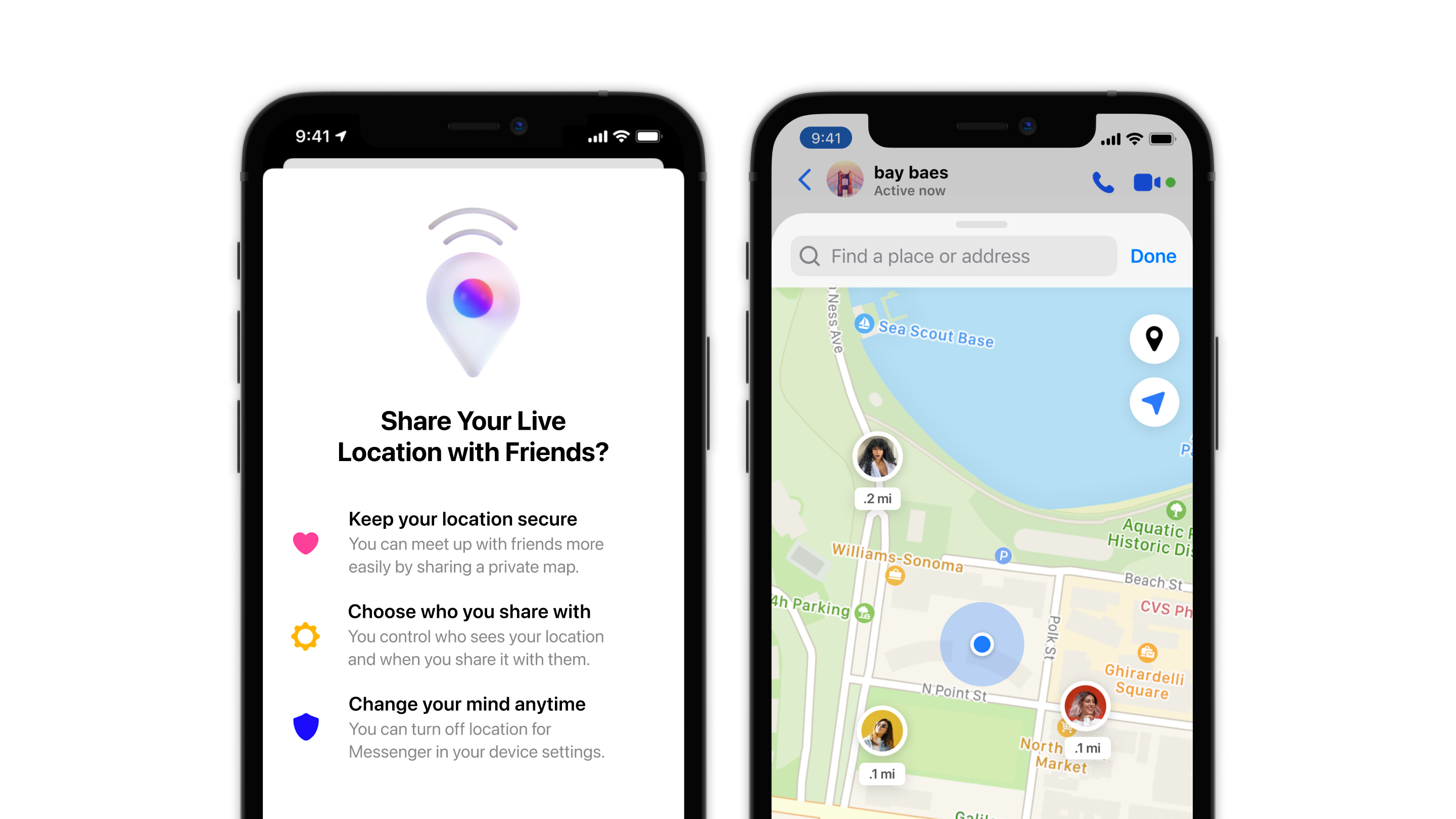

Assuring Safety for Live Location Sharing in Messenger
Timeline:
August – December 2019
Collaborators:
Alice Chuang, Product Designer
Yoo Kim, Content Designer
Tarun Chakravorty, Product Designer
Overall Impact:
Launched on iOS & Android to 1.3 billion international users
My Impact:
Led design sprint with Facebook's location team
Led location sharing principles workshop
Conducted user testing study
Presented project at Messenger Design All Hands
Problem: People saw the value of location sharing but didn't feel in control nor safe to do so.
In 2019, Messenger was reducing its app size by removing 84% of core code. This meant nearly every feature had to be redesigned.
Since live location sharing's initial release in 2017, people's attitudes towards sharing their location on Facebook had shifted.
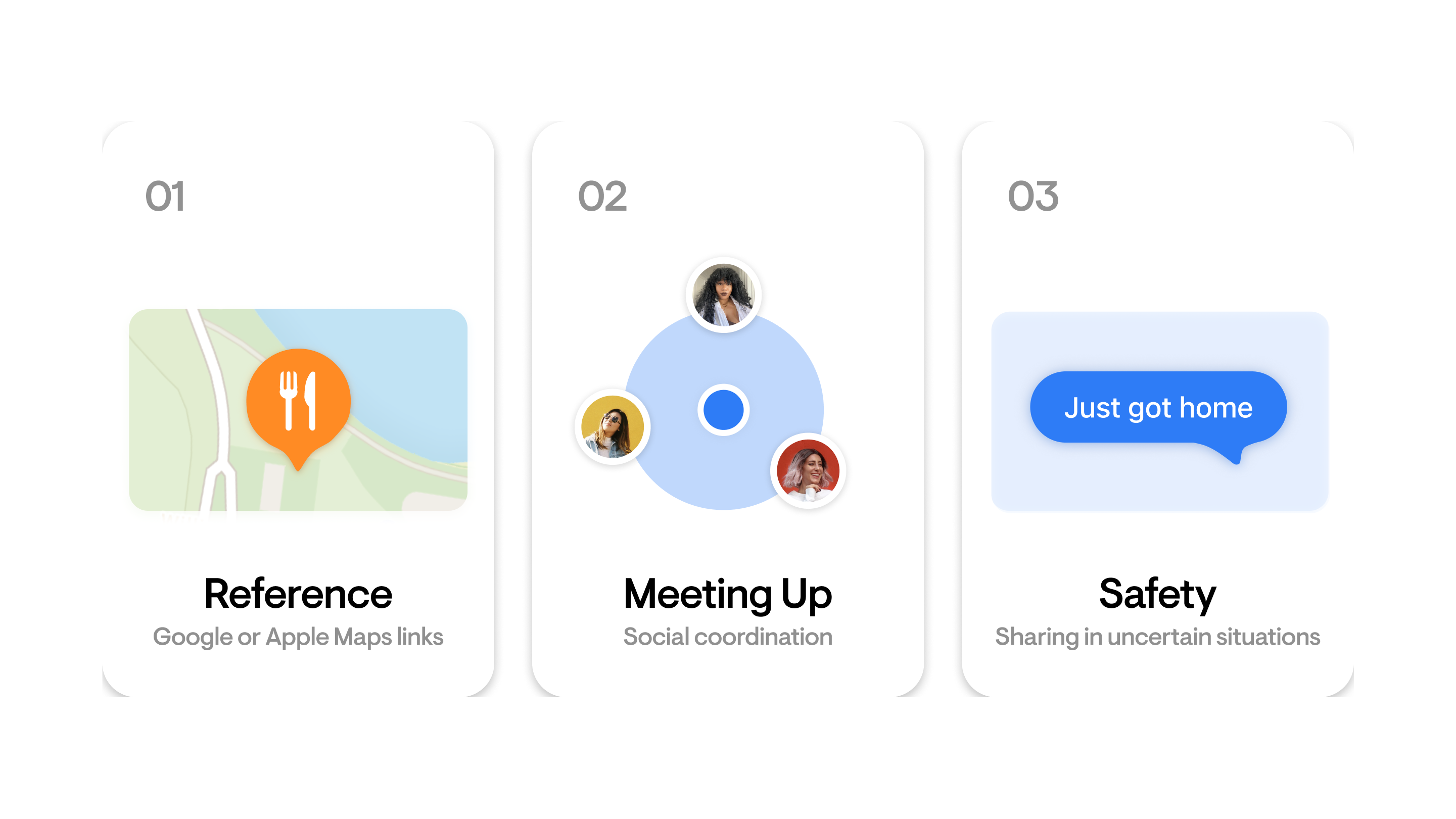

RESEARCH
How were people using location sharing?
While location sharing had been designed for facilitating social coordination, an unexpected pattern was people relying on it for safety.
During research, we learned that people share their location with friends in new environments like going on a first date or meeting up with a stranger for a Craigslist sale.
65% of Americans have never used location sharing features on any of their devices.
Pew Research Center
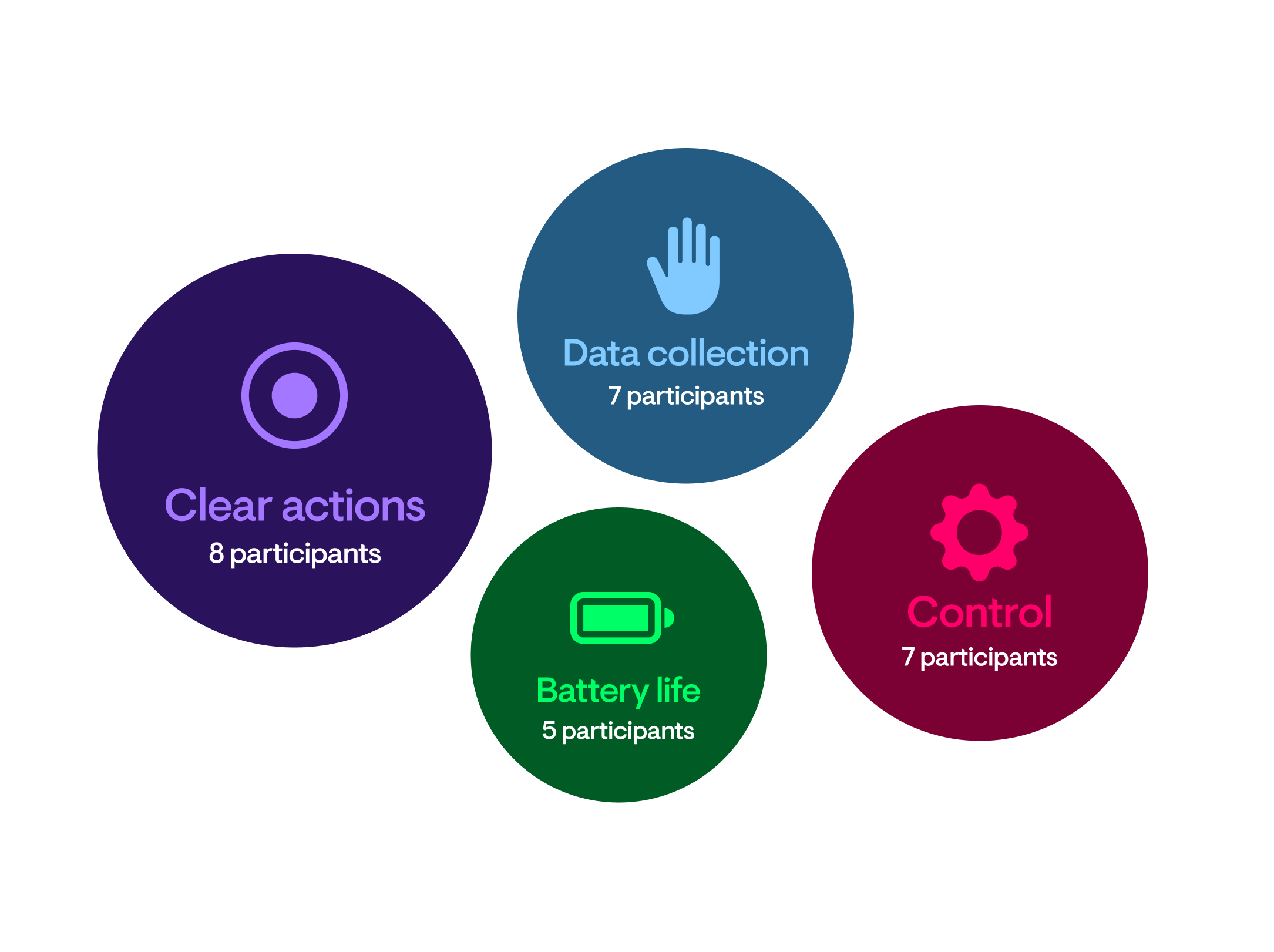

What were users' top concerns?
"Does it actually stop sharing? [Location sharing] could be creepy."
"I would probably accidentally turn it on in my pocket and not know..."
"It's easier to just text people where I'm at than try to figure out how to do [location sharing]..."
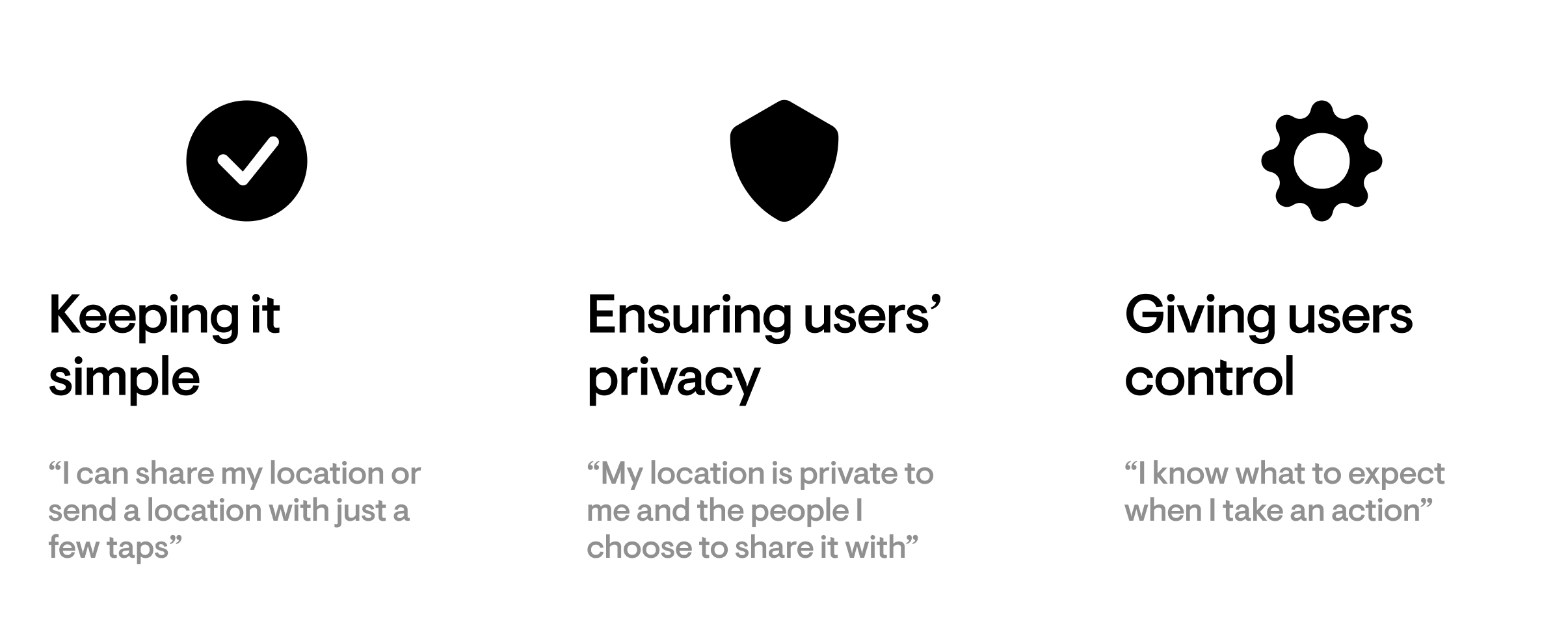

USER-FOCUSED DESIGN PRINCIPLES
Location sharing is simple, private & easily controlled
I led a cross-functional workshop to determine our design principles. These principles directly reflect user behavior concerns. These helped guide decision making later on.
Hypothesis: Addressing user concerns upfront in the XP will make the user more open to share their location.
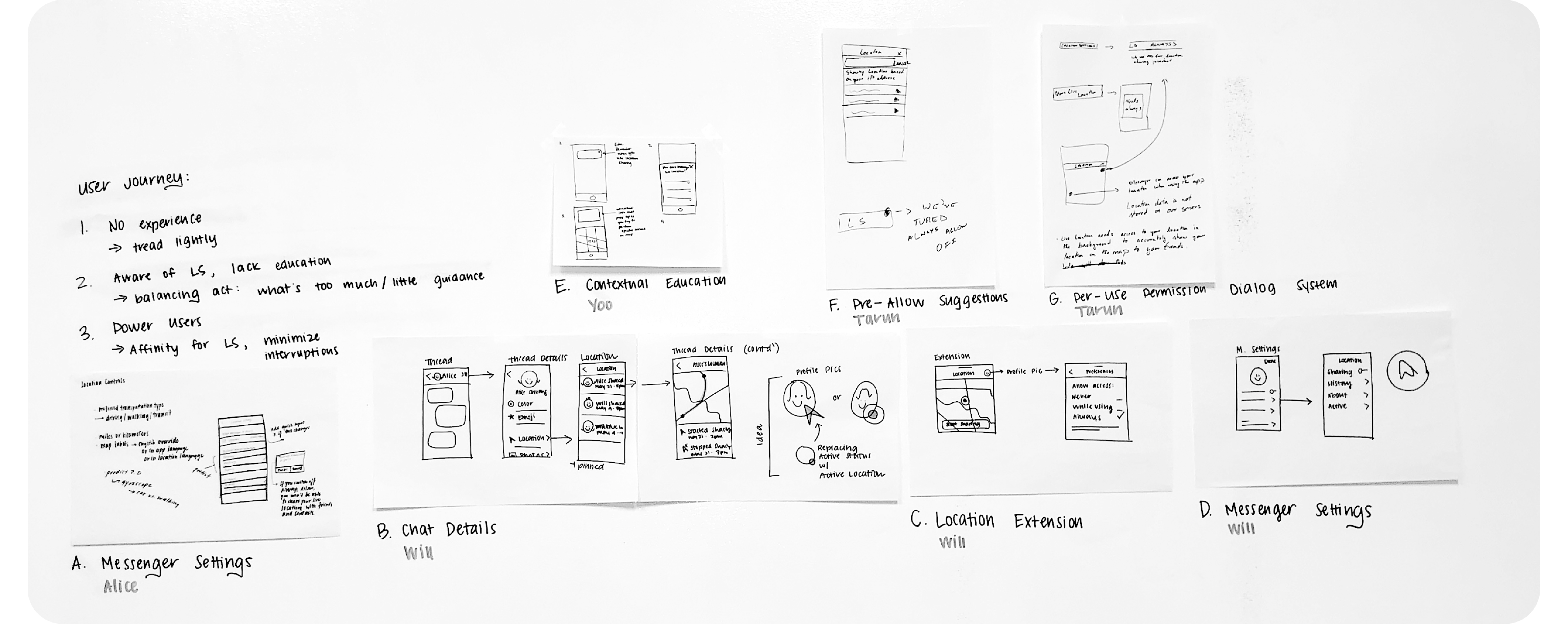

I worked with my team members to identify 7 opportunities to integrate safety and control education in the flow
ADDRESSING USER CONCERNS
Adding education in the flow was an opportunity to teach users how Messenger respects their privacy
Because our insights validated users' concerns around location sharing safety, I pushed for adding an educational screen that communicated Messenger's commitment to privacy and gave more context about the feature.


Adding an education screen before the system prompt addressed user concerns up front in the experience
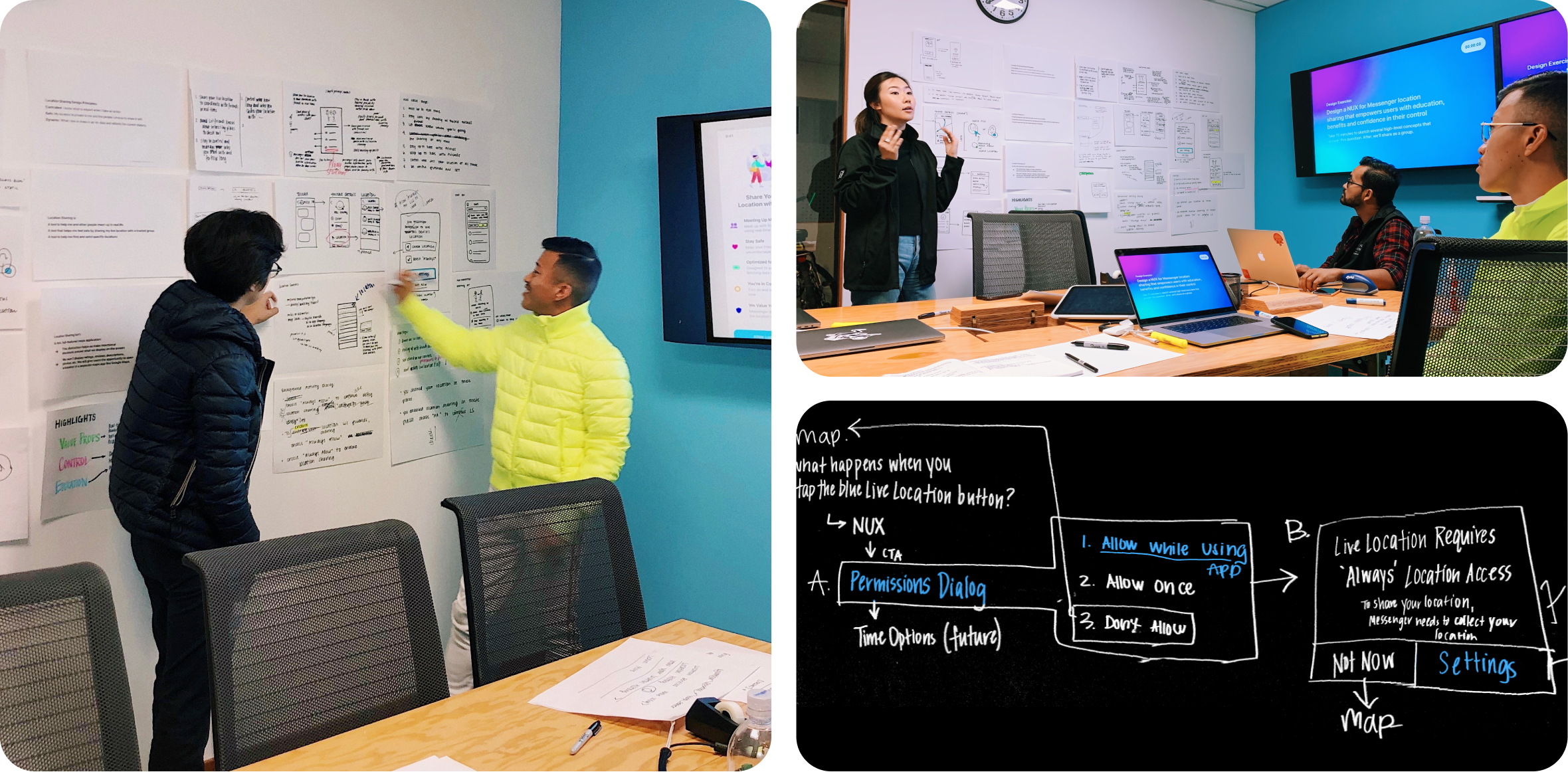

I led a design workshop to define the user journey and identify opportunities for in-product education
ANTICIPATING CONCERNS
Adding in-product education addresses concerns
Based on the concerns discovered in user research, our team created a value-based product education screen. The benefits weren't equally important and we were unsure which benefits were most important to different types of users.


The education screen anticipates and addresses concerns users may feel prior to sharing their location
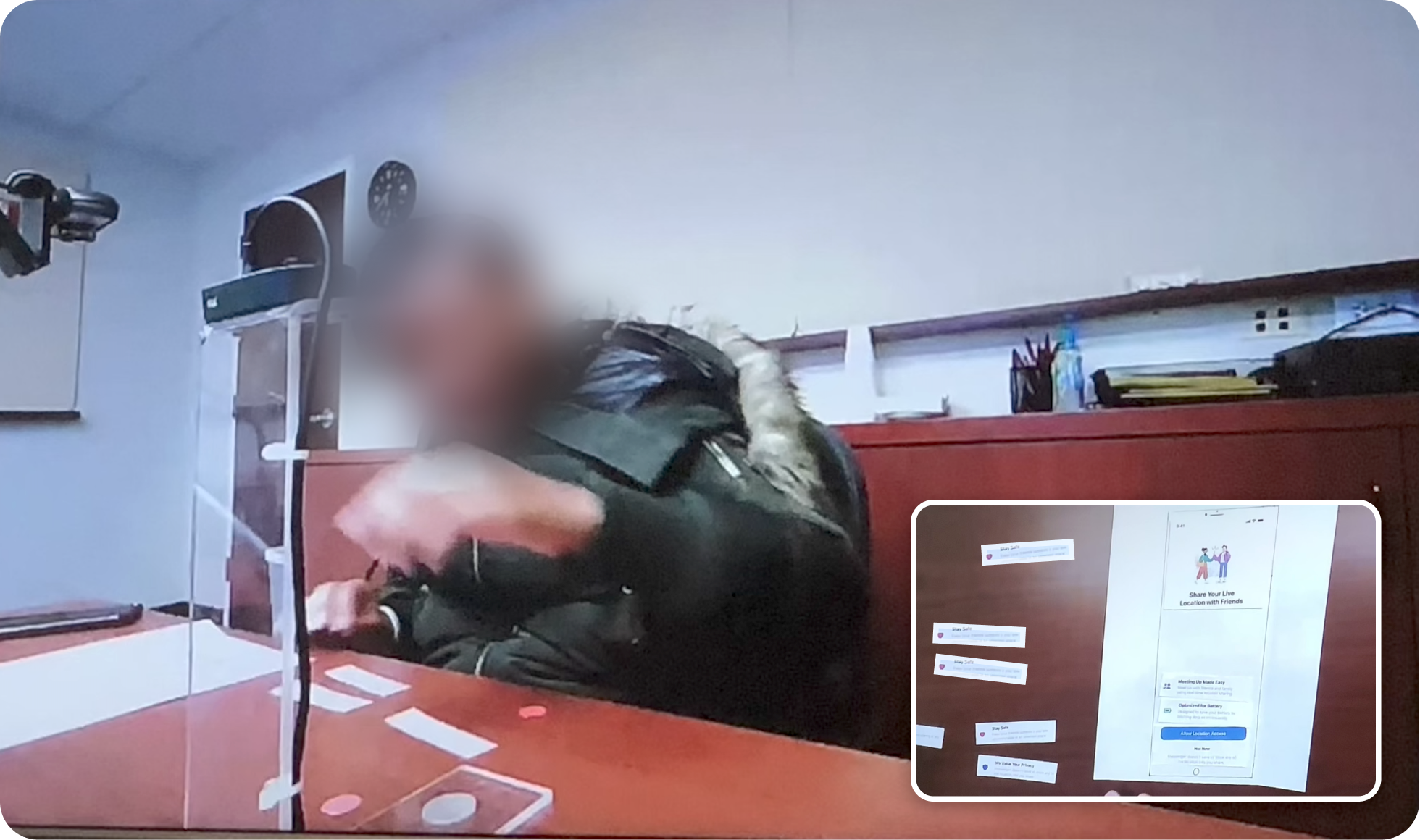

A research participant ranking the benefits of the in-product education screen
USABILITY TESTING
We got feedback from 7 research participants
Research participants were sourced from Chicago, IL. All were technically proficient in either iOS or Android.
Most found the education page valuable
"I like how I can turn it off whenever. I didn't know how long it was for..."
Most successfully completed the permissions flow
"The pop up gave me easy instructions for what to do."
Some saw themselves using it IRL
"I don't know [downtown Chicago] at all so I'd turn this on for my mom."
FINAL DESIGNS
Sharing your location in 3 different ways with education and clear controls
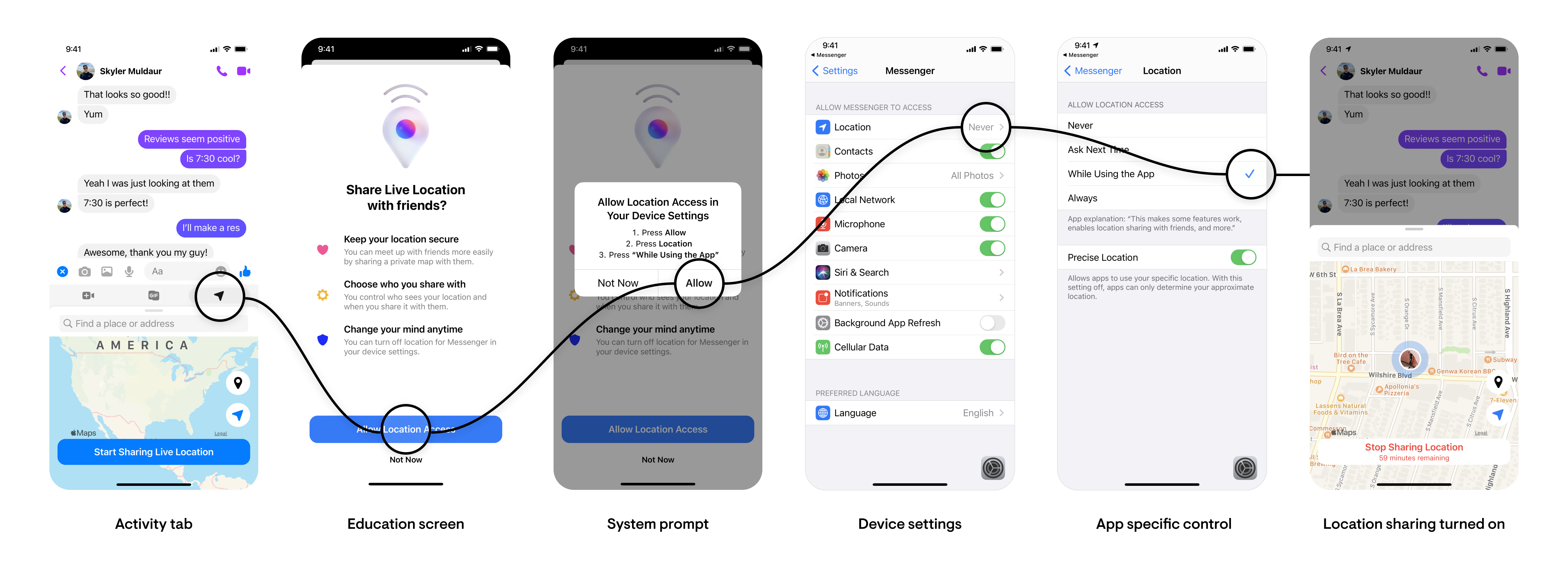

1: Sharing live location
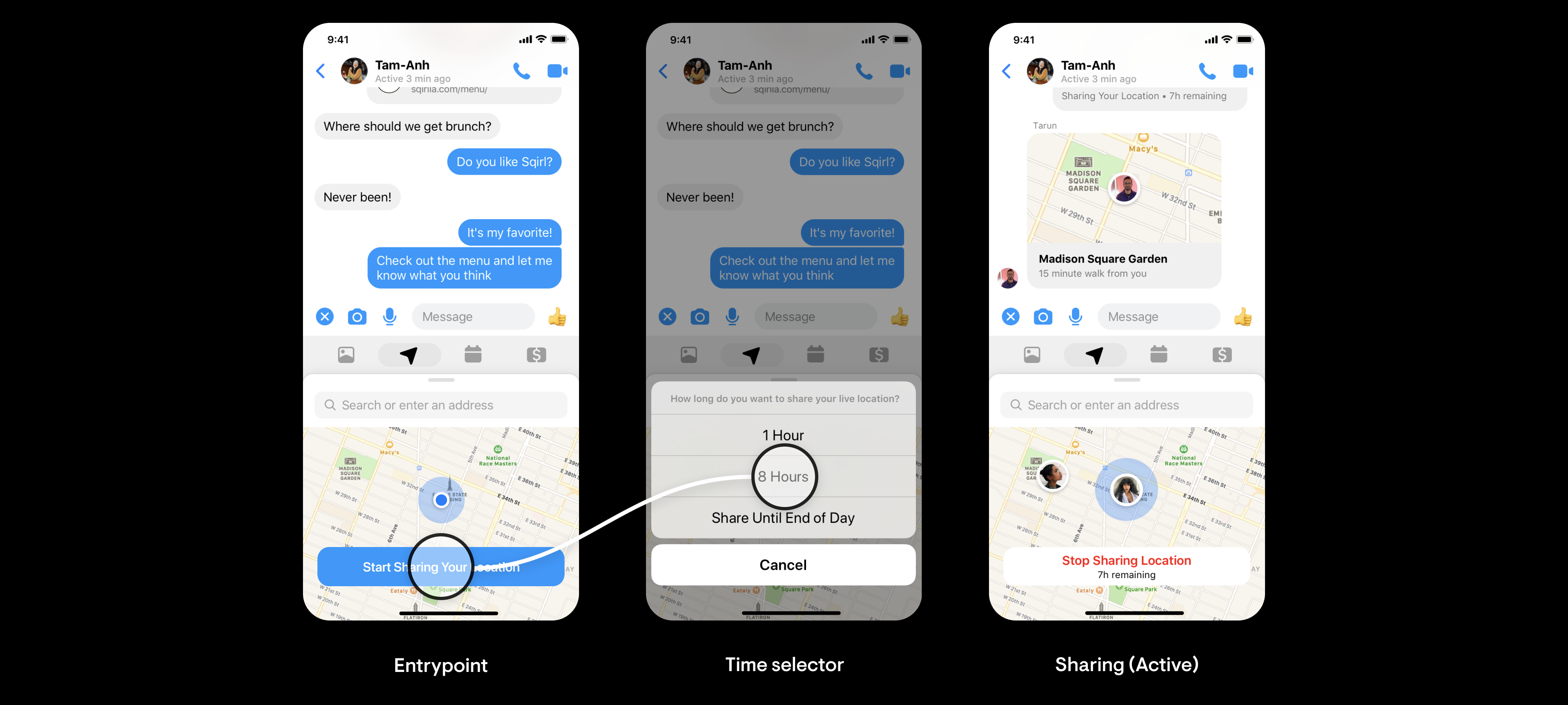

2: Sending a named location
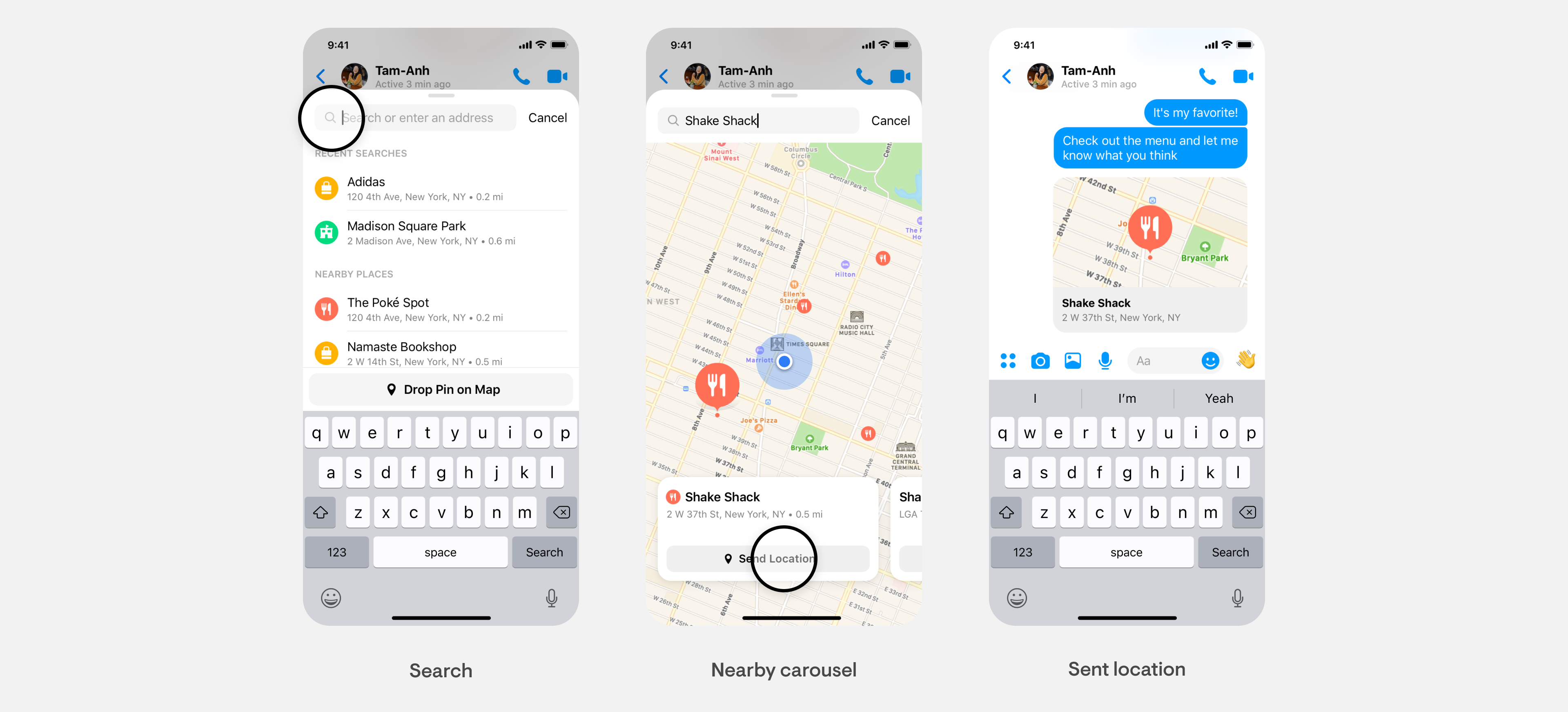

3: Sending a pinned location
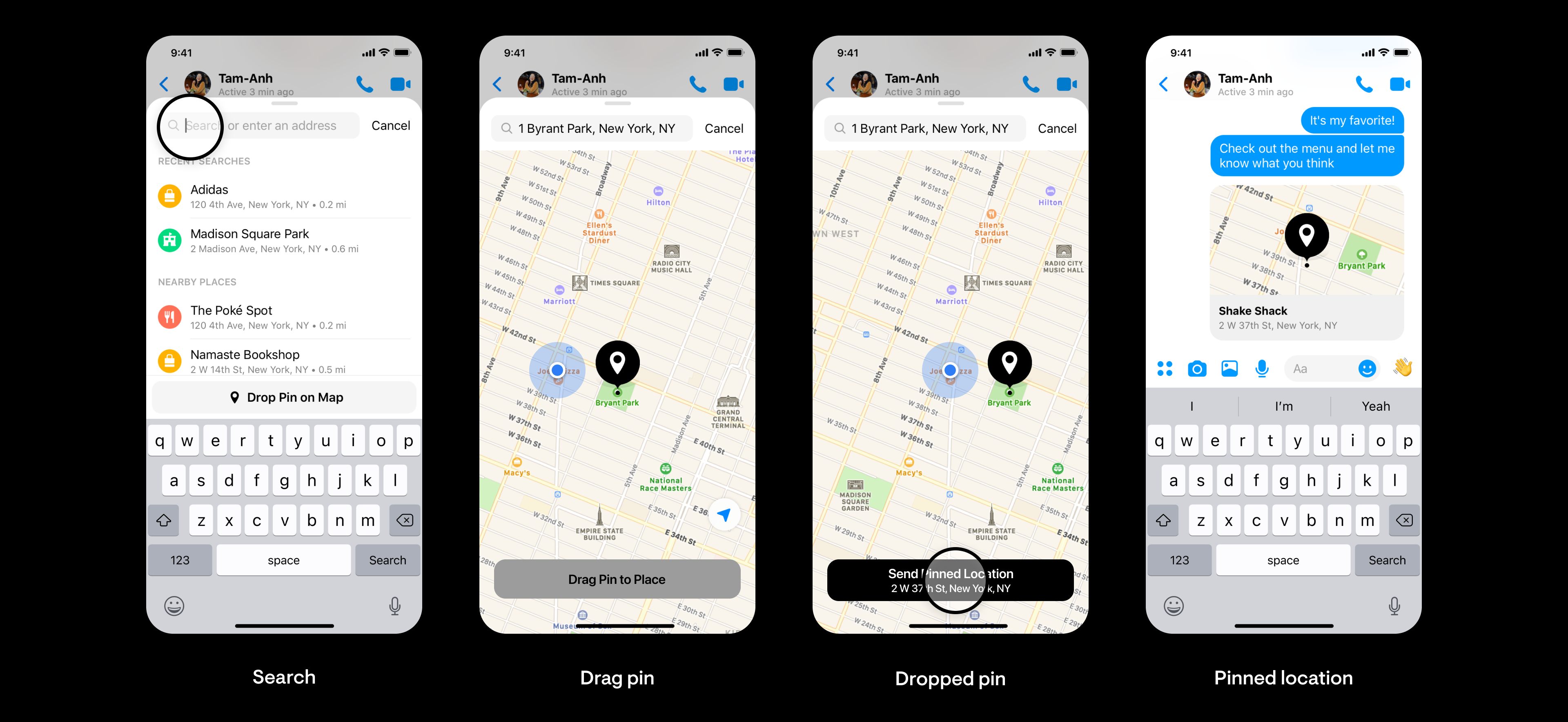

We shouldn't assume that users think we value their best interest.
Stating our commitment to their safety goes a long way in their perceptions of the XP.
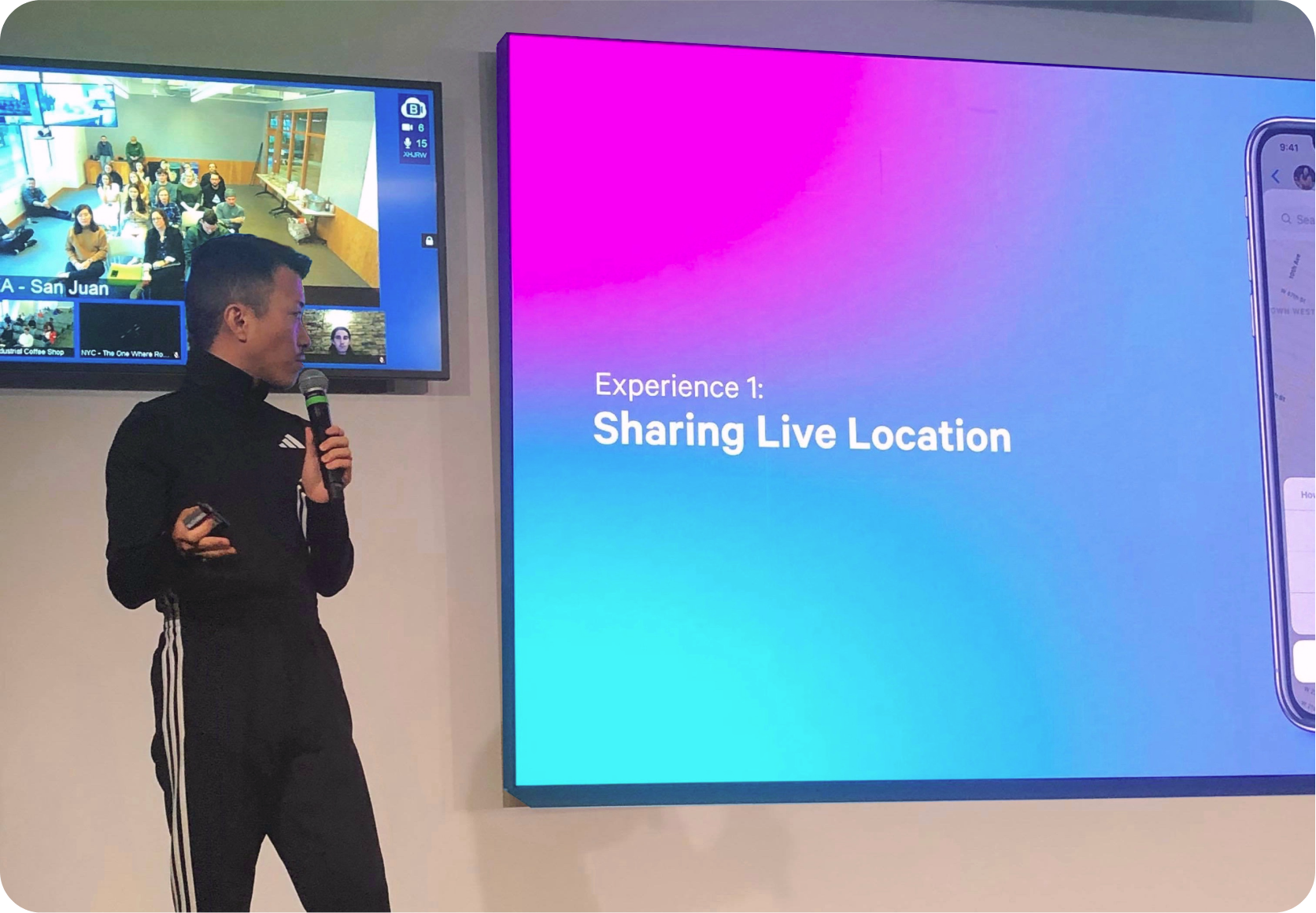

Presenting location sharing work and process to Messenger Design team in November 2019 All Hands
Learnings
I recognize that designing to earn trust is a slow process and cannot be tracked via a single metric but rather by a combination of design empathy and user vulnerability.
I appreciate and thank my mentor, Alice C. LeBeau who supported my process and gave me the opportunity to own much of this project.
Location sharing is available in Messenger.
